Violins are complex tools that a violinist uses to tell a story. Repairing and /or restoring these beautiful objects takes great skill and your instrument should only be entrusted to the hands of one who can satisfactorily prove they have had the best training and continued skills set.
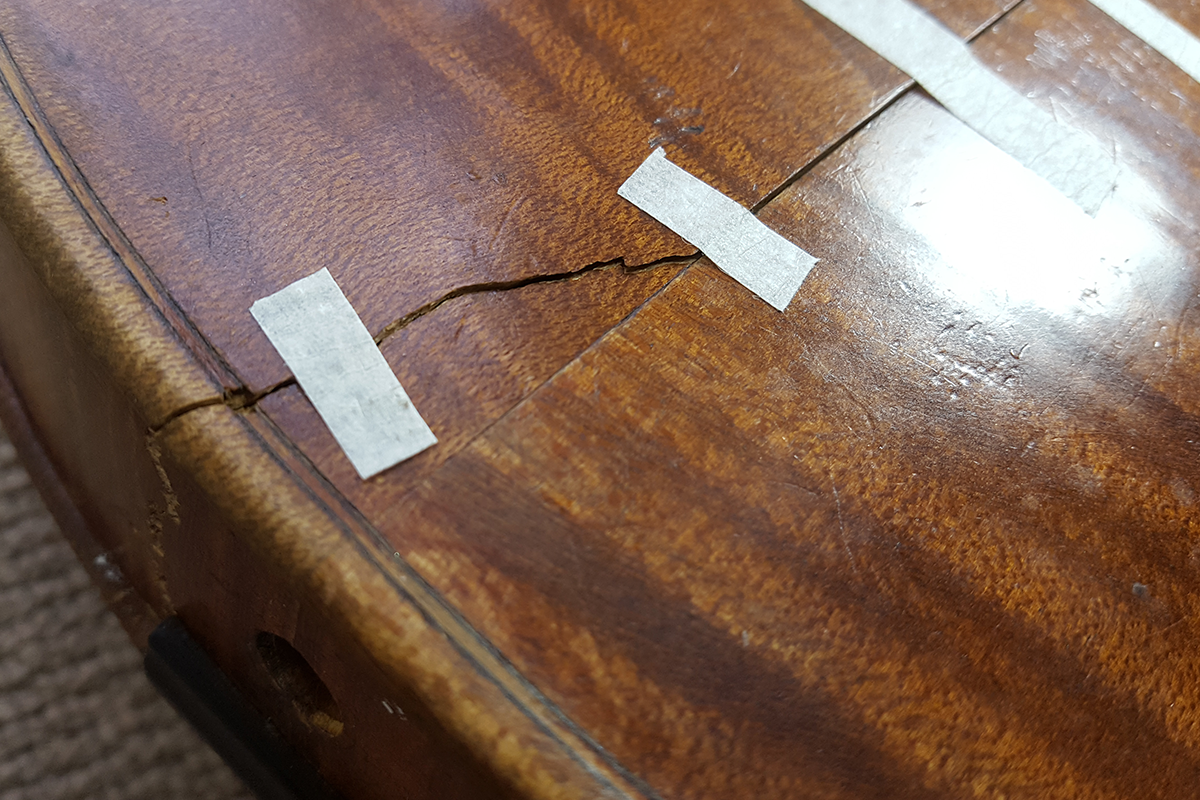
Here is an example of a pretty tricky restoration I carried out. The violin had been dropped and the damage is obvious. These pictures show the extent of the damage to the back and after restoring and touching in the varnish the repair is invisible to the naked eye.
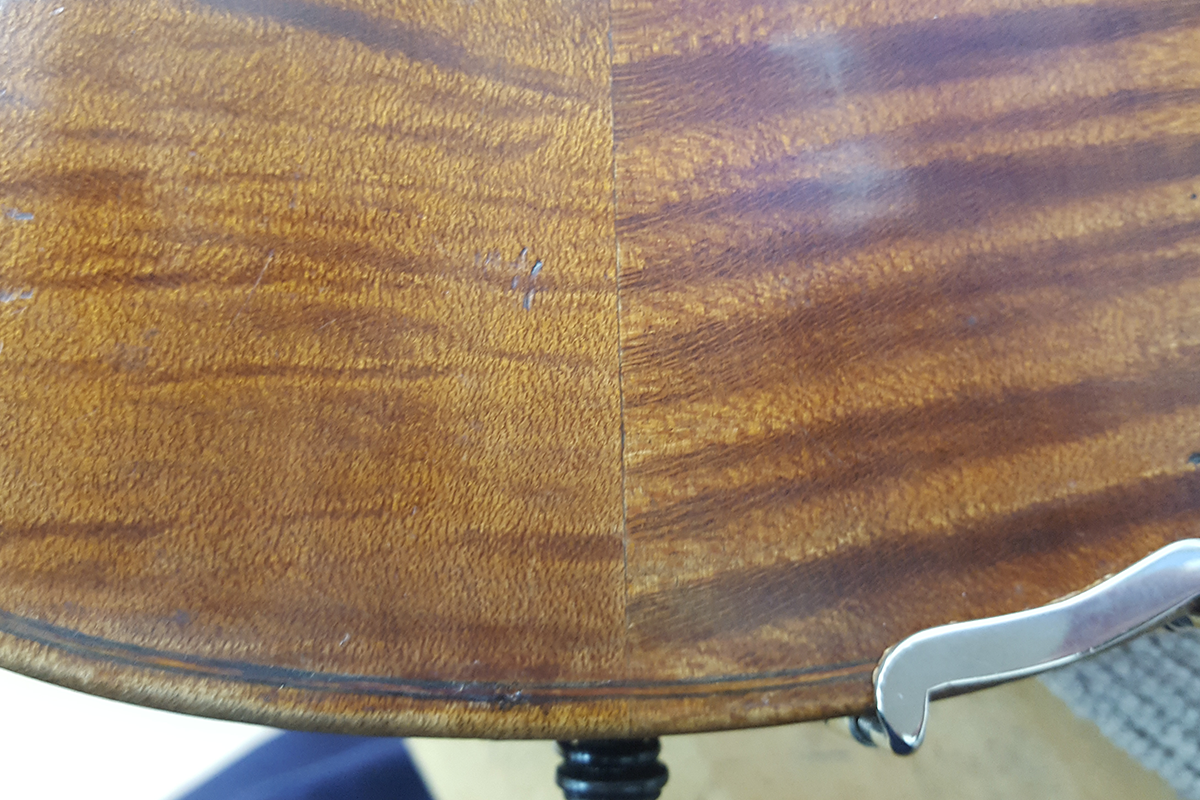
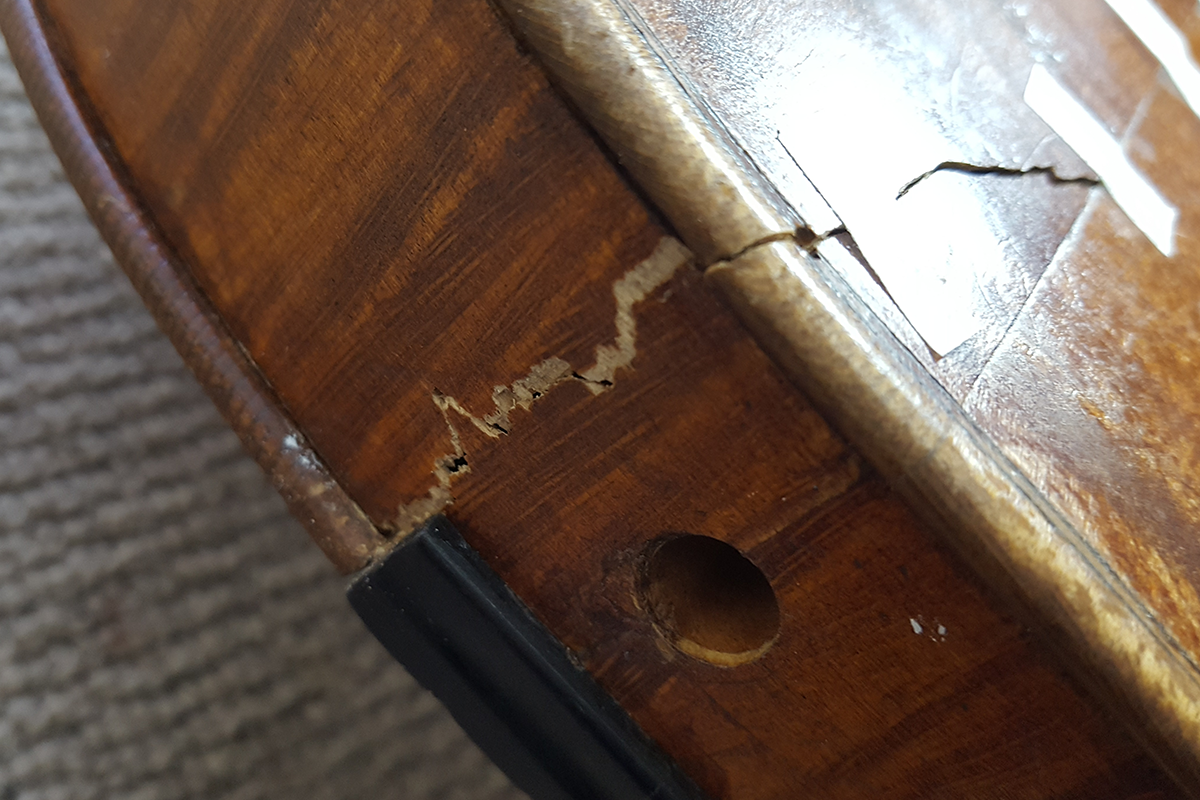
So from the same violin this shows the restoration on the rib structure. The rib had been ripped apart in the fall, and after aligning, gluing, studding and replacing the plates it was then over to touching in the varnish to complete the restoration. Again the final repair is not visible to the naked eye. The player was thrilled.
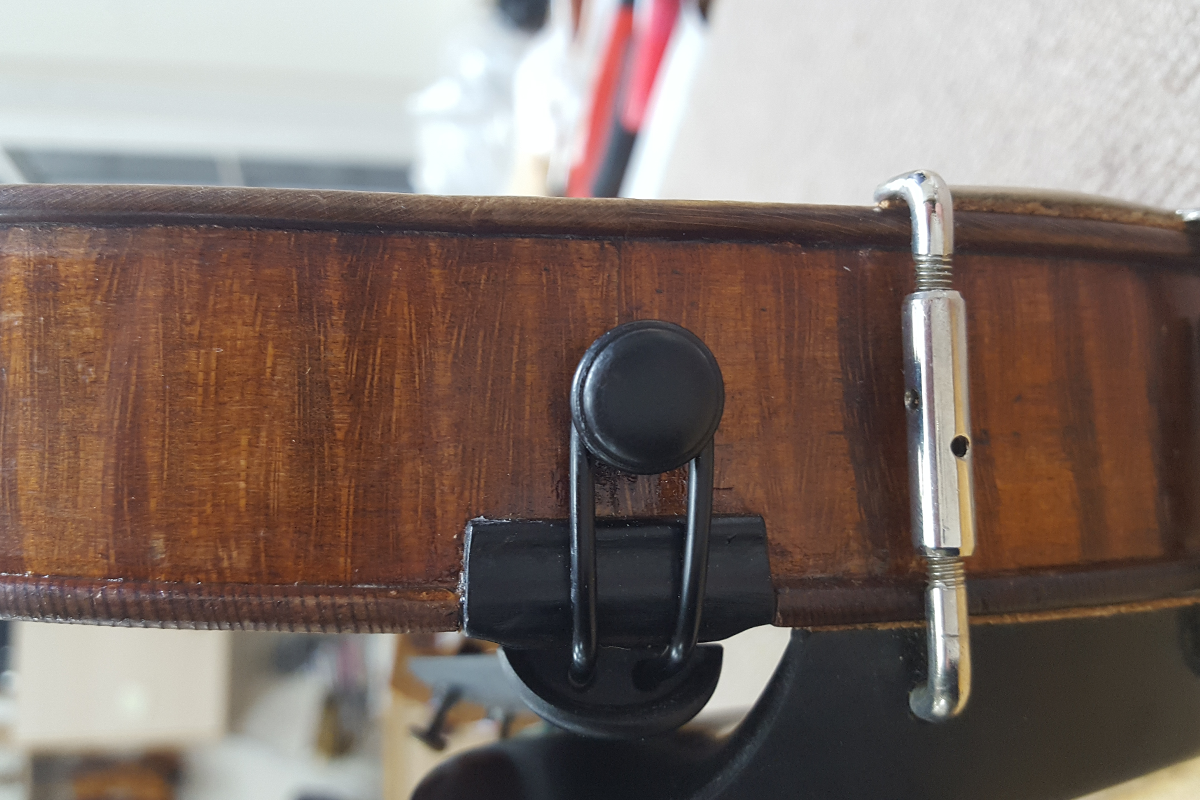
Each violin is as individual as you and I. The same restoration feels different on each violin. Understanding these subtleties and empathizing with each instrument is what I do and it makes for a great job, well done. A little gluing, removing a front for internal work or a bushing are all second nature to me. But I don’t stop there.
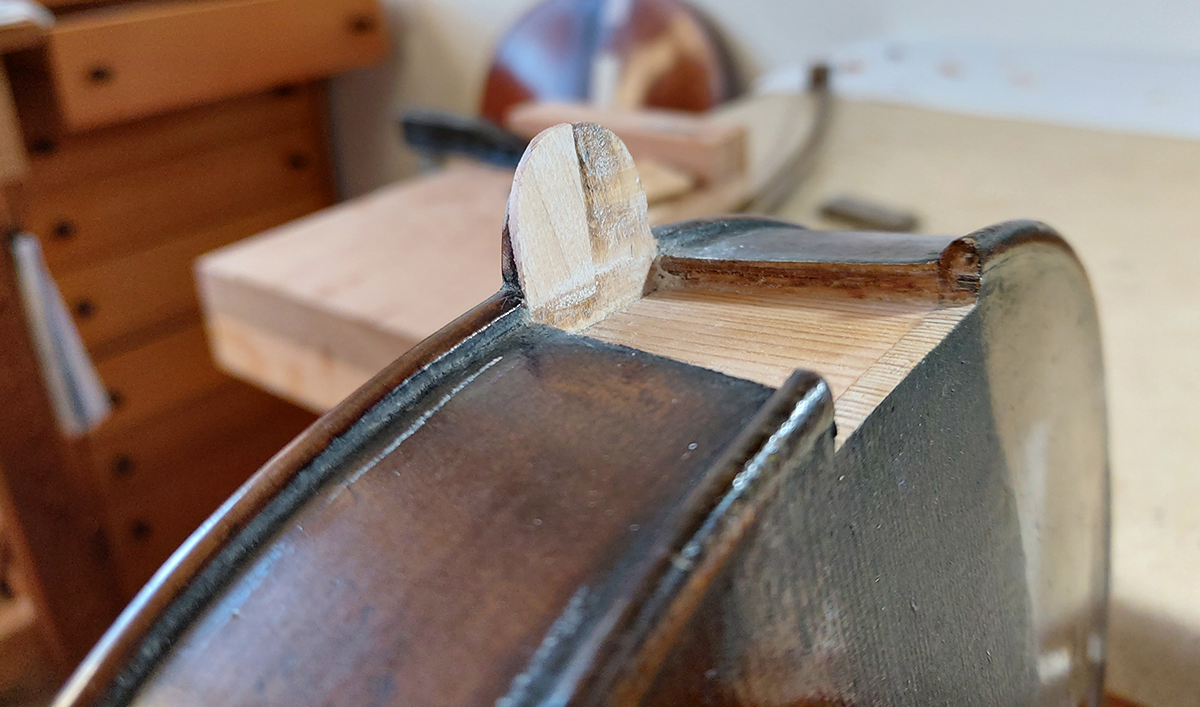
Internal button damage was caused when this violin was dropped. The wood ripped away as the neck broke out of the body, so I reconstructed the button.
I also specialise in tonal quality. Many makers and restorers can only focus on the woodwork and the varnish. For me ultimately it comes down to sound quality. I can see by your set up if the instrument is not functioning to its full potential before I even hear it. I know how to improve the sound quality and offer your instrument the chance to play at its absolute optimum. If your instrument isn’t performing at its best, how can you?
When violins are exposed to different temperatures, climates, and humidity, changes occur. The wood is influenced by its surroundings, even staying in the UK from summer to winter. Cracks can appear, sound may dull. When an instrument is badly damaged it’s obvious you must bring it to me. Having a free annual consultation will allow me to offer piece of mind that these smaller issues are under control too.
Please get in touch to discuss your violins needs.
I also help and advise on insurance claims if appropriate.
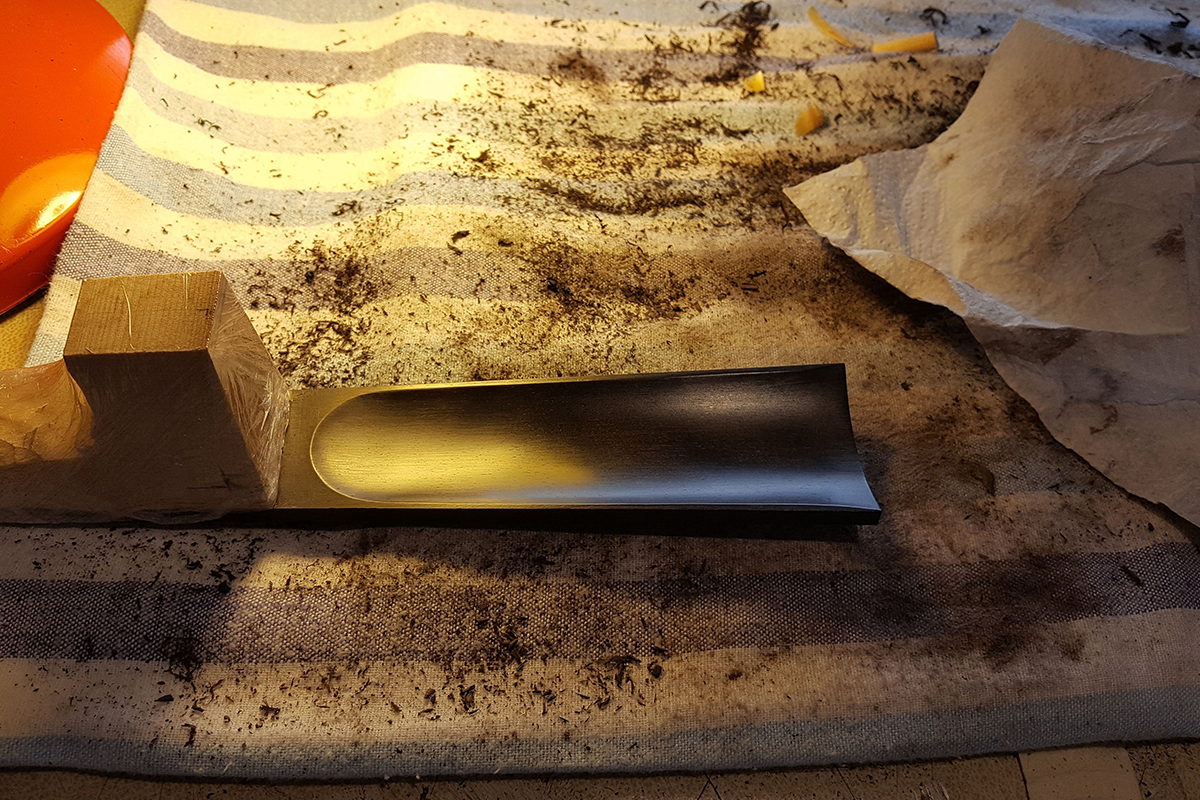
When finishing the underside of a fingerboard I use a low light to check for bumps and dips. Most of the wood has already been removed before attaching to the neck. It is so important here to keep the added weight of a fingerboard to a minimum. Clingfilm is used on the neck root/stock to prevent ebony dust getting into the wood.
